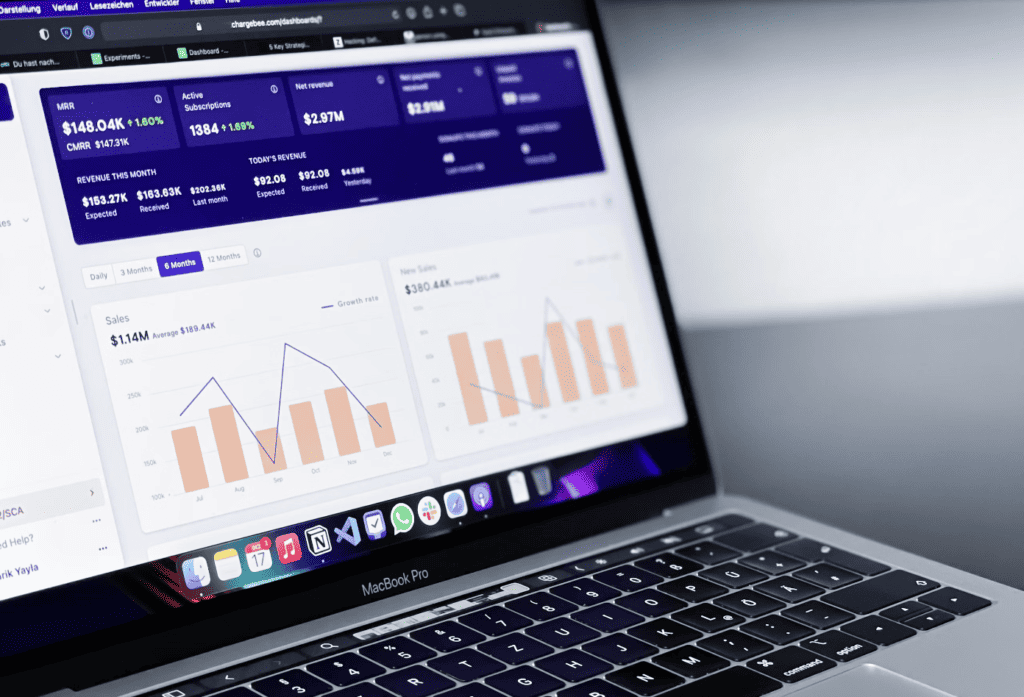Speak to small business owners about what keeps them awake at night and you will hear two common worries that have. One is how can they grow their business and the second one is how can they manage the payments more effectively.
Cross selling is one of the few effective ways in which a small business can increase sales and grow the business without having to invest much in acquiring new customers. Cross selling can be very effective to increase the sales transaction value with the existing set of customers.
In the past decade where I have worked closely with small business owners, I have seen a few business owners who have excelled at cross selling their products to their existing customers and have seen their business growing consistently with increasing sales year over year.
In this article, we will cover cross-selling, which is a critical component of small business sales strategy that all small business owners should give a good deal of thought to.
What is cross selling for a small business?

Cross selling is a strategic sales approach where a business offers additional products or services to its customers over and above their initial purchase. This strategy can be especially beneficial for small businesses, as it can lead to increased sales, deeper customer relationships, and improved customer satisfaction within the existing set of customers.
In the context of small businesses, cross-selling can be seen as a way to enhance the customer buying experience. By understanding the needs and preferences of their customers, businesses can offer products or services that add value to the customer’s initial purchase. For instance, if a customer buys a laptop, a small business can cross-sell accessories like a magic keyboard or a wireless mouse or even headphones. This not only boosts sales but also demonstrates the business’s commitment to try and fulfil customer needs.
The effectiveness of cross selling strategy can largely depend on how well a business knows its customers. Small businesses often have the advantage of having more personal interactions with their customers, allowing them to tailor their cross-selling strategies effectively. By engaging with customers and understanding their buying patterns, small businesses can identify cross-selling opportunities that are likely to be well received.
However, the process of cross selling must be handled tactfully. Overemphasis on sales can be a turn-off for customers. Instead, What small businesses should do is to focus on how their products or services can add value to the customer’s life. This approach ensures that the sales pitch is seen as a helpful suggestion rather than an aggressive sales tactic.
Technology can also play a crucial role in effective cross selling for small businesses. By adopting moderm customer relationship management (CRM) tools, businesses can gather insights into customer behavior and preferences based on the information that is captured, stored and analysed in the software. This data can then be used to identify potential cross-selling opportunities, ensuring that the product offered is relevant and meaningful to the customer.

Training the sales staff in the art of cross selling is essential, small business owners should themselves get their hands dirty while training the team. Employees should be passionate and knowledgeable about the products and skilled in identifying opportunities where they can offer additional items to customers. The most important aspect of employee training is that sales agents should be able to solve for the customer’s problem rather than pushing sales. Effective training ensures that cross-selling efforts are perceived as genuine attempts to help the customer, rather than just a sales tactic.
Cross selling is a strategic sales tactic for small businesses to increase sales and strengthen customer relationships. By understanding their customers, offering relevant products, and approaching sales with a customer-centric mindset, small businesses can effectively leverage cross selling to their advantage. This approach not only enhances the customer experience but also contributes to the long-term success and growth of the business.
What are the benefits of cross selling for a small business?

The benefits of cross-selling are often understated, but if a small business is able to put in place a process for identifying situations where their customers are in the right frame of min for a cross-sell conversation, then cross selling can prove extremely effective to increase sales.
- Cross-selling Increases sales and revenue: Cross selling can directly contribute to higher sales. By offering an additional product or service, a small business can increase the average transaction value. This means each customer interaction has the potential to generate more sales, which can significantly boost overall revenue.
- Cross selling Improves customer satisfaction: When done correctly, cross-selling can enhance the customer experience. By offering a product that complements the customer’s primary purchase, a business can demonstrate a deeper understanding of the customer’s needs. This leads to increased customer satisfaction.
- Cross selling is a cost-effective form of customer acquisition: Acquiring new customers can be expensive as it needs marketing spends. Cross-selling to existing customers is a cost-effective strategy since the customer already exists for the business. By focusing on customers who already trust the brand, a business can increase sales without the additional expense of acquiring new customers.
- Cross-selling enhances customer relationships: Through cross selling, businesses can deepen their relationships with customers. By understanding and meeting additional needs, a business shows its commitment to the customer which builds the relationship.
- Cross selling helps with diversification of sales: Cross-selling can diversify a business’s sales portfolio. By not relying solely on a single product or service, a business can mitigate risks because of market pressure and competition
- Cross-selling promotes better inventory management: Cross-selling can also aid in inventory management. By promoting complementary products, a business can ensure a more balanced stock turnover, which is essential for efficient inventory management. It reduces skew of the inventory of products where one product massively outsells another.
- Cross selling creates a competitive advantage: Effective cross-selling can give a small business a competitive edge when compared with competition. It will have a better trained sales force, a better inventory mix and faster sales growth which feeds a virtuous cycle.
- Cross-selling is crucial for long-term business growth: Cross selling can contribute to the long-term growth and sustainability of a small business by increasing sales, enhancing customer satisfaction and building stronger customer relationships.
What is the difference between up selling and cross-selling for a small business?

In marketing and sales, both upselling and cross-selling are used interchangeably which can confuse actual business owners. Both can effectively increase sales, but they work in different ways. Cross is different from upselling, it basically enables a small business to boost its revenue by selling additional products or other items in addition to what the customer wanted.
Upselling is when the business encourages a customer to buy a more expensive or upgraded version of the product they’re already interested in. It’s about enhancing the value of a customer’s purchase by offering a higher-quality option. The goal of upselling in sales and marketing is to make customers aware of better options that they might not have considered, thereby increasing the business’s revenue from a single sale.
Cross-selling, on the other hand, involves recommending products that complement or are related to the item the customer is already buying. It’s about expanding the sale by offering additional products. “Would you like fires with that” is a very well known cross-selling term in the market :P. The aim here is to increase the business’s overall sales by selling more products to the same customer.
For small businesses, both upselling and cross-selling are vital sales and marketing techniques. They can help increase the average transaction size, leading to higher overall revenue. Upselling focuses on quality upgrades, while cross-selling expands the range of products sold. In marketing, these strategies not only boost sales but also improve customer satisfaction by offering additional value.
A small business can leverage these tactics by training their staff to recognise opportunities for upselling and cross-selling. This requires a contextual understanding the customers’ needs and preferences, which is crucial in making relevant and beneficial suggestions.
Successful cross-selling in a small business can result in better customer satisfaction leading to repeat customers, increased loyalty, and word-of-mouth marketing, all of which are essential for the growth and sustainability of the business.
How should a small business adopt cross-selling strategies to increase sales and get more customers?

There are broadly 6 steps in which a small business can adopt cross selling strategies as a part of its overall sales strategy.
- Understand Your Customers as the first step to successful cross selling: The first step in effective cross-selling is to gain a deep understanding of your customers’ needs and buying habits. This can involve meeting with customers, observing them in their day to day life or work, analysing purchase history and by reviewing and summarising customer feedback. By understanding what your customers are looking for, you can tailor your cross-selling strategies to match their needs.
- Train Your Team to effectively cross-sell: For cross-selling to be successful, your sales team should be passionate and well trained. They need to understand not only the products and services but also how they can complement each other. Training in customer service and communication can also help them to cross-sell more effectively without being intrusive.
- Bundle Products and Services can can cross-sell well together: Bundling complementary products or services together can be an effective cross-selling technique. This not only makes it convenient for the customer but can also offer them a better deal, making the cross-sell more appealing.
- Leverage Customer Relationships in any cross selling conversation: Small businesses often have close relationships with their customers. You can use these relationships to your advantage by personalizing your cross-selling recommendations. Personalized suggestions based on the customer’s past purchases or interests can be more effective than generic sales pitches.
- Utilize Digital Platforms to help identify cross-sell opportunities: In today’s digital age, small businesses must leverage software that is integrated with online platforms for cross-selling. This can help you identify customers who have previously interacted with various offerings to sharp-shoot cross sell conversations.
- Offer Exclusive Deals to convert cross-sell prospects: To encourage customers to consider additional purchases, you can offer exclusive deals or discounts when they buy multiple products. This not only increases sales but also enhances the customer experience.
How should a company use complementary products to cross-sell to get customers to buy more?

Deciding on what products or services are best for cross-selling is a science in itself where large companies spend countless hours doing research to perfect the mix. As a small business, you will not have the time and resources to put in the research to find out how complementary products can be used for cross selling.
I have broken down some of the basic steps that a small business should follow to successfully arrive at an assortment of products that work well together in a cross-sell scanario.
Understanding Your Core Offerings is the base for any cross-sell
- Analyze Your Products/Services: Begin by thoroughly understanding your own inventory or list of services. What are the primary features and benefits of each? How are they used?
- Customer Usage Scenarios: Consider the different scenarios in which your products or services are used. For example, if you sell bicycles, think about the different types of cyclists (commuters, recreational riders, professional athletes) and their unique needs.
Researching Customer Needs and Preferences will help identify situations for cross-selling
- Customer Feedback: Regularly gather feedback from your customers. What do they wish they had to complement their purchase? For the bicycle example, customers might express a need for high-quality helmets, repair kits, or cycling apparel.
- Market Research: Stay informed about trends in your industry. Are there new products or services that are gaining popularity? This can provide insights into potential complementary offerings.
Analyzing Purchase Patterns will give you a short-cut to a product mix for cross-selling
- Sales Data Analysis: Look at your sales data. Are there items that are frequently bought together? This can reveal natural pairings you might not have considered.
- Customer Profiles: Develop customer profiles based on their purchasing history. What combinations of products do they usually buy? This can guide you in identifying complementary products tailored to specific customer segments.
Competitive Analysis will give you an idea of what works in cross-selling
- Observe Competitors: What are your competitors offering as complementary products? This can give you ideas and also help you identify gaps in your own offerings. The best way to find this out is to do mystery shopping, where you shop around competitor stores or websites.
Experimentation and Feedback is the key to building a successful cross-sell strategy
- Test and Learn: Introduce potential complementary products in a limited manner and observe customer response. Do they show interest? Do they buy them along with the primary product?
- Customer Surveys: Conduct surveys or focus groups to directly ask customers what additional products or services they would find useful.
Is there a math to cross selling for a small business to succeed in generating more sales?

There are 3 key terms a small business owner must understand to effectively execute a cross-sell strategy that actually drives a business impact with respect to increase in sales.
- Average Transaction Value (ATV): This is the average amount spent by a customer per transaction. Cross-selling seeks to increase this value. If the ATV is $50, and through cross-selling, customers start buying an additional item worth $20, the new ATV becomes $70.
- Customer Purchase Frequency (CPF): This measures how often a customer makes a purchase over a certain period. Cross selling can also encourage repeat purchases. If CPF increases due to successful cross-selling, the total sales revenue rises.
- Customer Lifetime Value (CLV): This is the total value a customer is expected to bring to your business over their lifetime. Effective cross-selling strategies can increase CLV by enhancing customer satisfaction and loyalty, leading to repeat business.
For example, if a small business has 100 regular customers, with an average transaction value of $50 and a purchase frequency of once a month, the monthly revenue is $5,000. By implementing cross-selling strategies, if ATV increases by $20 and CPF by 10%, the new monthly revenue becomes $7,700 (130 customers x $70 ATV).
What is the 25% rule of thumb for cross-selling?
The “25% rule of thumb” for cross-selling is a guideline suggesting that the price of the additional product or service offered in a cross-selling scenario should not exceed 25% of the original purchase price. This rule is based on the idea that customers are more likely to consider additional purchases if the cost is relatively low compared to their primary purchase.
For example, if a customer buys a product worth $100, according to this rule, the cross-sell item should be priced at no more than $25. This pricing strategy is thought to strike a balance between increasing the average transaction value and maintaining customer willingness to purchase the additional item.
The rationale behind this rule is based on consumer psychology. A lower-priced add-on seems like a smaller decision and is less likely to cause the customer to hesitate. It feels like a minor addition rather than a significantly more expensive purchase. This approach can be particularly effective in increasing sales without overwhelming the customer, making it a popular strategy among businesses that aim to enhance their sales through cross-selling.
As a small business, you could choose to start with a small number, something like 10% in the beginning of your cross-sell journey and gradually increase the value of the complementary products to come up to about 25% of the initial purchase value.
How do you calculate cross-selling and its effectiveness in driving sales?
Calculating the effectiveness of cross-selling involves analyzing key sales metrics before and after implementing cross-selling strategies. This typically includes tracking the Average Transaction Value (ATV), which is the total revenue divided by the number of transactions. An increase in ATV suggests that customers are spending more per visit, indicating successful cross-selling. You can calculate ATV as Total Revenue / Total sales (units sold) in a given period.
Another important metric is the Items Per Transaction (IPT), which measures the average number of items sold in each transaction; a higher IPT indicates more products being sold per purchase.
Businesses often calculate the Cross-Sell Ratio, defined as the number of transactions that include a cross-sold item divided by the total number of transactions, expressed as a percentage. This ratio helps in understanding the direct impact of cross-selling on sales. By comparing these metrics before and after implementing cross-selling techniques, businesses can gauge the effectiveness of their cross-selling strategies.
What are the digital marketing tips for a business to cross sell products to grow sales?

For a small business to successfully cross-sell a product online, there are few tips that they need to follow and implement as a part of their digital marketing strategy.
- Use Data Analytics: Utilize customer data to understand buying patterns and preferences. This can guide you in making personalized cross-selling suggestions on your digital platforms.
- Personalize the Online Experience: Implement personalized recommendations on your website. You may need to invest in personalisation software to help you set these up online on your website.
- Leverage Email Marketing: Send targeted emails based on past purchases or browsing history. For example, after a customer purchases a camera, follow up with an email suggesting lenses or photography classes. Use content here effectively to educate and convince.
- Optimize for Mobile: Ensure that your cross-selling recommendations are effectively displayed on mobile devices, considering a significant portion of online shopping is done via smartphones.
- Use Social Media Smartly: Promote complementary products on social media platforms using targeted content and organic posts. Engage with followers by showcasing how products can be used together.
- Create Bundles and Offers: On your e-commerce platform, create bundles of products that offer a slight discount when purchased together. This encourages customers to buy more.
How to do cross selling for a small business example for an offline transaction

The easiest way for a small business owner to understand the process of an offline cross-selling caste study is if we were to take a look at a boutique clothing store.
- Initial Purchase: A customer selects a stylish evening dress for an upcoming event.
- Understanding Customer Needs: The sales associate engages in a friendly conversation with the customer to understand the occasion for which the dress is being purchased. This builds rapport and provides context for potential cross-selling.
- Identifying Complementary Products: Based on the style and color of the dress, the associate considers what accessories would complement the outfit. For an evening dress, suitable items might include a matching clutch, elegant jewelry, or a pair of high heels.
- Personalized Recommendations: The sales associate then personally guides the customer to the accessories section, showing a selection of necklaces, earrings, and clutches that would pair well with the dress. The associate emphasizes how these accessories can enhance the overall look for the event.
- Creating a Complete Look: The associate can go further by suggesting a scarf or a stylish coat if the event is in a colder setting, showing the customer how to create a complete and cohesive outfit.
- Offering a Bundle Deal: To encourage the purchase of the additional items, the boutique could offer a special deal, such as a 10% discount when purchasing two or more accessories with the dress.
- Finalizing the Sale: After the customer makes the selection, the sales associate can complete the sale by emphasizing the value and the cohesiveness of the entire ensemble, ensuring the customer feels satisfied and excited about her purchase.
How to do cross selling for a small business example online

In the case of an online cross-sell attempt, lets look at a case study in the e-commerce space in the home and kitchen niche where the customer is looking to buy a coffee maker.
- Initial Purchase: A customer adds a coffee maker to their online shopping cart.
- Automated Recommendations: As soon as the coffee maker is added to the cart, the website’s recommendation system automatically displays a range of complementary products. These could include coffee beans, a coffee grinder, reusable filters, or a set of designer coffee mugs.
- Personalized Email Marketing: If the customer leaves the site without completing the purchase, an automated email is triggered, reminding them of their cart and suggesting the complementary products again. The email can be personalized based on their browsing history or past purchases.
- Bundle Offers: On the product page of the coffee maker, the store can feature a bundle offer, such as “Buy a Coffee Maker and get 10% off on Coffee Beans and Mugs.” This encourages customers to purchase the bundle for a complete coffee-making experience.
- Customer Reviews and Testimonials: Including customer reviews that mention the benefits of buying complementary products can be persuasive. For example, a review might mention how purchasing a specific brand of coffee beans from the same store greatly enhanced their coffee experience.
- Utilizing Social Media: The business can use social media platforms to showcase the coffee maker and its complementary products. Posts can include tips on making the perfect coffee and highlight the benefits of purchasing the complete set.
- Retargeting Ads: Implement retargeting ads that follow the customer on other websites or social media platforms, showing the coffee maker they viewed along with the complementary products, encouraging them to revisit the store and complete the purchase.
Hope that all of these tactics and strategies give you a good sense of how you can implement cross selling in your business to increase sales and grow.
